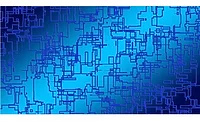Benefits to Showing Cable Management a Little TLC
The equipment/cable closet is a vital part of any video surveillance or access system. While it may not be the most exciting piece of the system, still it is essential to care for and maintain cabling to help eliminate many potential problems down the road. For example, a tangled nest of cables can create issues during troubleshooting and additions to the system, whereas proper cable management can help enhance system reliability and optimize efficiency.
The benefits of first class cable management, either performed during the install or later as a cleanup service, are reflected by TLC – time saving, longer life and cost efficiency.
Time Saving
The extra time that is needed in the design/build stage to include a plan for cable management is well worth the investment for the time it saves later. Having a system diagram for cable management can make resolving any problems faster and easier. In addition, cables that are labeled on both ends facilitate easy tracing and simplify replacement. Color coding by function (i.e. audio, video, control, power) also helps during wire pathing and can ensure prevention of mistakes such as placing power cables next to or in close proximity to Ethernet cables.
In analog systems, labeling jacks on the patch panel can also make troubleshooting faster and easier. For example, each camera cable coming into the closet is identified by a cable tag with a number or camera location. The jacks on the patch panel are labeled as to their location at the control center. The appropriate camera cable is then simply connected to the jack on the patch panel that describes the location where the video is sent. This arrangement also makes it easier and faster to move cameras to different locations when necessary.
Longer Life
Clean and organized management of data rack cables, both vertical and horizontal, can have a positive impact on the lifespan and efficiency of the cabling system. Cables that are bent or otherwise impaired can cause degradation of the information-carrying capabilities of the wire and do not meet cabling standards. Cable lengths that are too long can cause issues with troubleshooting in the future, and cable lengths that are not quite long enough cannot be bundled as easily and may be subject to more bending or stretching that, again, may affect quality.
Cabling schemes within the data rack also have a tremendous effect on the ability of the system to adapt to changes such as hardware expansion and technology upgrades. If not planned correctly, the cabling architecture could force an early replacement of the cabling infrastructure to meet connectivity requirements as the video surveillance system grows.
Cost Efficiency
When the design, installation and architecture of air, power and network pathways are optimized in a rack, system efficiency is maximized and both capital and operational expenses are reduced. Changes and/or additions can be implemented with negligible disruptions to the overall system and service time is kept to a minimum. Most important though, a healthy equipment rack can help to ensure that the video surveillance and access control systems perform their jobs of protecting and securing the organization’s people and assets.
Applying the principles of TLC can help make a security system easily expandable and help it to perform at optimum capacity for a long time – making it a worthwhile investment.
Looking for a reprint of this article?
From high-res PDFs to custom plaques, order your copy today!








